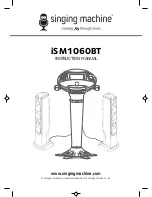
3
5.
Usage: Do not connect the power supply until the address of the horn/strobe has been set and
confirmed and the fire alarm control panel has been properly connected. After the fire alarm control
panel is successfully reset, the red status indicator (see Fig.3 for its location) of the horn/strobe will
blink. After the horn/strobe receives an operation signal, the status indicator will remain lit and the
horn/strobe will give both horn/strobe alarm signals. After the system is muted or reset, the horn/strobe
will stop outputting horn/strobe alarm signals and the status indicator will start to blink again.
VI. Installation and debugging
A special base is necessary during the installation of a horn/strobe. As shown in Fig.4, the external
dimensions of the special base are 142
×
84
×
10mm (L
×
B
×
H). The horn/strobe is subject to a four-wire
non-polarity connection: Terminals 1 and 2 are respectively connected with the ter24V and GND
of the DC power supply terminals 3 and 4 are respectively connected with the terminals L1 and L2 of the
signal bus of the fire alarm control panel. See Fig.5.
Fig.4 Fig.5
Specific installation and debugging methods:
1.
Use two M4 screws to fix the matched mounting base on the designated position via the mounting holes
shown in Fig.4 (the installation may be done horizontally or vertically. Choose any two of the six mounting
holes for installation) as instructed in the construction drawing and make sure the matched mounting base
has been firmly installed.
2.
Disconnect the power supply of the fire alarm control panel and connect all the bases correctly in the way
shown in Fig.5, which is a construction drawing.
Note: When there are a lot of horns/strobes in a system, it is necessary to consider the loading capacity of
the power supply of the fire alarm control panel. An external DC24V auxiliary power supply might be
necessary at this time. Please follow the construction design drawings.
3.
Make sure the type of the horn/strobe matches the type given on the construction drawings. Use a coder to
code the horn/strobe according to the address code marked on the construction drawings.
4.
After all the horns/strobes are installed and checked, connect the power supply of the fire alarm control
panel and conduct automatic login.
5.
After a horn/strobe logs into the fire alarm control panel, the red status indicator of the horn/strobe will blink;
after the horn/strobe receives an operation signal, the red status indicator will remain lit and the horn/strobe
will give both horn/strobe alarm signals. After the system is muted or reset, the horn/strobe will stop
outputting horn/strobe alarm signals and the status indicator will restore to the monitoring status and start to
blink again.
VII. Precautions
1. Pay attention to the marking and polarities of the terminals during installation and wiring.
2. Do not make different products share the same address in a single alarm circuit or the system will fail to operate
normally.
3. Make sure during installation that there are no objects in front of the horn/strobe that block the light given by the
horn/strobe and/or prevent the horn/strobe from sounding.
4. Make the installation comply with related provisions of the Code for Installation and Acceptance of Fire Alarm System
(GB50166-2007).
VIII. Maintenance and inspection
1. As specified in national standard Code for Installation and Acceptance of Fire Alarm System (GB50166-2007), at least
quarterly tests should be done for each horn/strobe.
2. If a horn/strobe fails due to a material defect or a manufacturing process defect under the normal conditions of use in
one year following the date of its delivery, we shall repair or replace it for free. However, the faults of the horn/strobe due
to artificial damages, improper use or unauthorized adjustment, reconstruction or disassembly are not covered in the
guarantee and we shall assume no responsibility for all the consequences thereby caused.
4
3. We may provide a paid repair service for the products with any faults beyond the guarantee range. If you have such
products needing repair, please contact us. W hen sending such a product to us for repair, you are expected to provide
some important information about the product, such as the phenomenon and possible cause of the product fault, so that
we can find out the cause of the fault in the shortest time and the information may be used as a reference in our future
product development and improvement.
IX. Fault analysis and troubleshooting
Fault phenomenon
Possible cause
Troubleshooting method
Remarks
The wiring is wrong.
Inspect whether or not the wiring
is correct.
The linkage function has not
yet been enabled.
Inspect whether or not the
general linkage indicator is lit.
The short-circuit block is set
wrong.
Inspect whether or not the
short-circuit block is correctly set
and whether or not its contact is
good.
The horn/strobe cannot
give a horn/strobe alarm
signal.
The
internal
circuit
is
damaged.
Send the horn/strobe back to the
factory for repair.




















